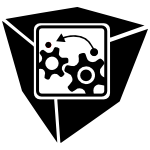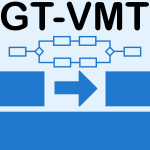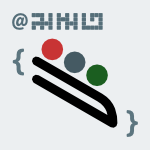248 papers:
 DAC-2015-LiuWLCWBQ #challenge #design #security
DAC-2015-LiuWLCWBQ #challenge #design #security- Cloning your mind: security challenges in cognitive system designs and their solutions (BL, CW, HL, YC, QW, MB, QQ), p. 5.
 ICPC-2015-HauptmannJW #automation #generative #refactoring #testing
ICPC-2015-HauptmannJW #automation #generative #refactoring #testing- Generating refactoring proposals to remove clones from automated system tests (BH, EJ, VW), pp. 115–124.
 ICPC-2015-SohTAW #android #detection #user interface
ICPC-2015-SohTAW #android #detection #user interface- Detecting clones in Android applications through analyzing user interfaces (CS, HBKT, YLA, LW), pp. 163–173.
 ICSME-2015-MondalRS #case study #comparative
ICSME-2015-MondalRS #case study #comparative- A comparative study on the bug-proneness of different types of code clones (MM, CKR, KAS), pp. 91–100.
 ICSME-2015-SvajlenkoR #clone detection #detection #tool support
ICSME-2015-SvajlenkoR #clone detection #detection #tool support- Evaluating clone detection tools with BigCloneBench (JS, CKR), pp. 131–140.
 SANER-2015-Keivanloo0Z #clone detection #detection #java #repository #scalability
SANER-2015-Keivanloo0Z #clone detection #detection #java #repository #scalability- Threshold-free code clone detection for a large-scale heterogeneous Java repository (IK, FZ, YZ), pp. 201–210.
 SANER-2015-MondalRS #mining #named #refactoring
SANER-2015-MondalRS #mining #named #refactoring- SPCP-Miner: A tool for mining code clones that are important for refactoring or tracking (MM, CKR, KAS), pp. 484–488.
 SANER-2015-MurakamiHK #named #set #visualisation
SANER-2015-MurakamiHK #named #set #visualisation- ClonePacker: A tool for clone set visualization (HM, YH, SK), pp. 474–478.
 SCAM-2015-RaposSAC #named #navigation
SCAM-2015-RaposSAC #named #navigation- SimNav: Simulink navigation of model clone classes (EJR, AS, MHA, JRC), pp. 241–246.
 SCAM-2015-UddinGGR #comprehension #eye tracking #on the #using #visualisation
SCAM-2015-UddinGGR #comprehension #eye tracking #on the #using #visualisation- On the comprehension of code clone visualizations: A controlled study using eye tracking (MSU, VG, CG, CKR), pp. 161–170.
 MoDELS-2015-StephanC #clone detection #detection #identification #using
MoDELS-2015-StephanC #clone detection #detection #identification #using- Identification of Simulink model antipattern instances using model clone detection (MS, JRC), pp. 276–285.
 SAC-2015-KrutzMS #analysis #detection #effectiveness #using
SAC-2015-KrutzMS #analysis #detection #effectiveness #using- Examining the effectiveness of using concolic analysis to detect code clones (DEK, SAM, ES), pp. 1610–1615.
 ESEC-FSE-2015-LinPXZZ #interactive #recommendation
ESEC-FSE-2015-LinPXZZ #interactive #recommendation- Clone-based and interactive recommendation for modifying pasted code (YL, XP, ZX, DZ, WZ), pp. 520–531.
 ICSE-v2-2015-FischerLLE #composition
ICSE-v2-2015-FischerLLE #composition- The ECCO Tool: Extraction and Composition for Clone-and-Own (SF, LL, RELH, AE), pp. 665–668.
 ISSTA-2015-WangGMC #android #approach #clone detection #detection #named #scalability
ISSTA-2015-WangGMC #android #approach #clone detection #detection #named #scalability- WuKong: a scalable and accurate two-phase approach to Android app clone detection (HW, YG, ZM, XC), pp. 71–82.
 FASE-2014-DuvalEPR
FASE-2014-DuvalEPR- Transformation of Attributed Structures with Cloning (DD, RE, FP, LR), pp. 310–324.
 CSMR-WCRE-2014-AlalfiCD #analysis #clustering #experience #industrial
CSMR-WCRE-2014-AlalfiCD #analysis #clustering #experience #industrial- Analysis and clustering of model clones: An automotive industrial experience (MHA, JRC, TRD), pp. 375–378.
 CSMR-WCRE-2014-KrishnanT #refactoring #unification
CSMR-WCRE-2014-KrishnanT #refactoring #unification- Unification and refactoring of clones (GPK, NT), pp. 104–113.
 CSMR-WCRE-2014-MondalRS #automation #mining #ranking #refactoring
CSMR-WCRE-2014-MondalRS #automation #mining #ranking #refactoring- Automatic ranking of clones for refactoring through mining association rules (MM, CKR, KAS), pp. 114–123.
 CSMR-WCRE-2014-RoyZK #past present future
CSMR-WCRE-2014-RoyZK #past present future- The vision of software clone management: Past, present, and future (Keynote paper) (CKR, MFZ, RK), pp. 18–33.
 CSMR-WCRE-2014-XieKZK #empirical #migration
CSMR-WCRE-2014-XieKZK #empirical #migration- An empirical study on the fault-proneness of clone migration in clone genealogies (SX, FK, YZ, IK), pp. 94–103.
 ICPC-2014-KulkarniM #framework #obfuscation #using
ICPC-2014-KulkarniM #framework #obfuscation #using- A code obfuscation framework using code clones (AK, RM), pp. 295–299.
 ICSME-2014-FischerLLE #reuse
ICSME-2014-FischerLLE #reuse- Enhancing Clone-and-Own with Systematic Reuse for Developing Software Variants (SF, LL, RELH, AE), pp. 391–400.
 ICSME-2014-KononenkoZG #compilation #question #what
ICSME-2014-KononenkoZG #compilation #question #what- Compiling Clones: What Happens? (OK, CZ, MWG), pp. 481–485.
 ICSME-2014-LinXPL0ZD #maintenance #named
ICSME-2014-LinXPL0ZD #maintenance #named- Clonepedia: Summarizing Code Clones by Common Syntactic Context for Software Maintenance (YL, ZX, XP, YL, JS, WZ, JSD), pp. 341–350.
 ICSME-2014-MondalRS #analysis #fine-grained
ICSME-2014-MondalRS #analysis #fine-grained- A Fine-Grained Analysis on the Evolutionary Coupling of Cloned Code (MM, CKR, KAS), pp. 51–60.
 ICSME-2014-Stephan #analysis #clone detection #detection #evaluation #mutation testing #using
ICSME-2014-Stephan #analysis #clone detection #detection #evaluation #mutation testing #using- Model Clone Detector Evaluation Using Mutation Analysis (MS), pp. 633–638.
 ICSME-2014-SvajlenkoIKRM #benchmark #big data #metric #towards
ICSME-2014-SvajlenkoIKRM #benchmark #big data #metric #towards- Towards a Big Data Curated Benchmark of Inter-project Code Clones (JS, JFI, IK, CKR, MMM), pp. 476–480.
 ICSME-2014-SvajlenkoR #clone detection #detection #tool support
ICSME-2014-SvajlenkoR #clone detection #detection #tool support- Evaluating Modern Clone Detection Tools (JS, CKR), pp. 321–330.
 ICSME-2014-WangG #design #recommendation #refactoring #using
ICSME-2014-WangG #design #recommendation #refactoring #using- Recommending Clones for Refactoring Using Design, Context, and History (WW, MWG), pp. 331–340.
 MSR-2014-KrutzL #clone detection
MSR-2014-KrutzL #clone detection- A code clone oracle (DEK, WL), pp. 388–391.
 MSR-2014-MondalRS #co-evolution #predict #ranking
MSR-2014-MondalRS #co-evolution #predict #ranking- Prediction and ranking of co-change candidates for clones (MM, CKR, KAS), pp. 32–41.
 MSR-2014-MurakamiHK #dataset
MSR-2014-MurakamiHK #dataset- A dataset of clone references with gaps (HM, YH, SK), pp. 412–415.
 SCAM-2014-BazrafshanK #debugging #developer #performance
SCAM-2014-BazrafshanK #debugging #developer #performance- Effect of Clone Information on the Performance of Developers Fixing Cloned Bugs (SB, RK), pp. 1–10.
 SCAM-2014-MondalRS #automation #identification #refactoring
SCAM-2014-MondalRS #automation #identification #refactoring- Automatic Identification of Important Clones for Refactoring and Tracking (MM, CKR, KAS), pp. 11–20.
 SCAM-2014-RahmanR #empirical
SCAM-2014-RahmanR #empirical- A Change-Type Based Empirical Study on the Stability of Cloned Code (MSR, CKR), pp. 31–40.
 SCAM-2014-SajnaniSL #case study #comparative #debugging #java
SCAM-2014-SajnaniSL #case study #comparative #debugging #java- A Comparative Study of Bug Patterns in Java Cloned and Non-cloned Code (HS, VS, CVL), pp. 21–30.
 VISSOFT-2014-VoineaT #analysis #visual notation
VISSOFT-2014-VoineaT #analysis #visual notation- Visual Clone Analysis with SolidSDD (LV, ACT), pp. 79–82.
 SEKE-2014-MaazounBB #feature model
SEKE-2014-MaazounBB #feature model- Feature model recovery from product variants based on a cloning technique (JM, NB, HBA), pp. 431–436.
 MoDELS-2014-BousseCB14a #scalability
MoDELS-2014-BousseCB14a #scalability- Scalable Armies of Model Clones through Data Sharing (EB, BC, BB), pp. 286–301.
 MoDELS-2014-BousseCB14a #scalability
MoDELS-2014-BousseCB14a #scalability- Scalable Armies of Model Clones through Data Sharing (EB, BC, BB), pp. 286–301.
 ICSE-2014-ChenLZ #android #detection #scalability
ICSE-2014-ChenLZ #android #detection #scalability- Achieving accuracy and scalability simultaneously in detecting application clones on Android markets (KC, PL, YZ), pp. 175–186.
 ICSE-2014-LinXXLPSZ #detection #difference #multi
ICSE-2014-LinXXLPSZ #detection #difference #multi- Detecting differences across multiple instances of code clones (YL, ZX, YX, YL, XP, JS, WZ), pp. 164–174.
 HPCA-2014-AwadS #behaviour #memory management #named
HPCA-2014-AwadS #behaviour #memory management #named- STM: Cloning the spatial and temporal memory access behavior (AA, YS), pp. 237–247.
 ASE-2013-ZhangPXJWZ #monitoring #on-demand #towards
ASE-2013-ZhangPXJWZ #monitoring #on-demand #towards- Towards contextual and on-demand code clone management by continuous monitoring (GZ, XP, ZX, SJ, HW, WZ), pp. 497–507.
 CSMR-2013-DubinskyRBDBC #case study #industrial #product line
CSMR-2013-DubinskyRBDBC #case study #industrial #product line- An Exploratory Study of Cloning in Industrial Software Product Lines (YD, JR, TB, SD, MB, KC), pp. 25–34.
 ICPC-2013-Kamiya #clone detection #detection #named #semantics
ICPC-2013-Kamiya #clone detection #detection #named #semantics- Agec: An execution-semantic clone detection tool (TK), pp. 227–229.
 ICPC-2013-MurakamiHHIK #analysis #clone detection #detection #lightweight #source code
ICPC-2013-MurakamiHHIK #analysis #clone detection #detection #lightweight #source code- Gapped code clone detection with lightweight source code analysis (HM, KH, YH, HI, SK), pp. 93–102.
 ICPC-2013-UddinRS #clone detection #detection #named #performance #scalability
ICPC-2013-UddinRS #clone detection #detection #named #performance #scalability- SimCad: An extensible and faster clone detection tool for large scale software systems (MSU, CKR, KAS), pp. 236–238.
 ICPC-2013-YamanakaCYIS #development #industrial #process
ICPC-2013-YamanakaCYIS #development #industrial #process- Applying clone change notification system into an industrial development process (YY, EC, NY, KI, TS), pp. 199–206.
 ICSM-2013-BazrafshanK #empirical
ICSM-2013-BazrafshanK #empirical- An Empirical Study of Clone Removals (SB, RK), pp. 50–59.
 ICSM-2013-Harder #developer #evolution #how #multi
ICSM-2013-Harder #developer #evolution #how #multi- How Multiple Developers Affect the Evolution of Code Clones (JH), pp. 30–39.
 ICSM-2013-KrishnanT #optimisation #problem #refactoring
ICSM-2013-KrishnanT #optimisation #problem #refactoring- Refactoring Clones: An Optimization Problem (GPK, NT), pp. 360–363.
 ICSM-2013-QianPXJZ #logic #mining #programming
ICSM-2013-QianPXJZ #logic #mining #programming- Mining Logical Clones in Software: Revealing High-Level Business and Programming Rules (WQ, XP, ZX, SJ, WZ), pp. 40–49.
 ICSM-2013-SahaRS #analysis #evolution #named
ICSM-2013-SahaRS #analysis #evolution #named- gCad: A Near-Miss Clone Genealogy Extractor to Support Clone Evolution Analysis (RKS, CKR, KAS), pp. 488–491.
 MSR-2013-SahaRSP #case study #comprehension #evolution
MSR-2013-SahaRSP #case study #comprehension #evolution- Understanding the evolution of type-3 clones: an exploratory study (RKS, CKR, KAS, DEP), pp. 139–148.
 MSR-2013-XieKZ #empirical #migration
MSR-2013-XieKZ #empirical #migration- An empirical study of the fault-proneness of clone mutation and clone migration (SX, FK, YZ), pp. 149–158.
 WCRE-2013-AntonyAC #approach #behaviour #clone detection #detection #modelling
WCRE-2013-AntonyAC #approach #behaviour #clone detection #detection #modelling- An approach to clone detection in behavioural models (EPA, MHA, JRC), pp. 472–476.
 WCRE-2013-ChatterjiCKH #case study #developer #maintenance
WCRE-2013-ChatterjiCKH #case study #developer #maintenance- Effects of cloned code on software maintainability: A replicated developer study (DC, JCC, NAK, JH), pp. 112–121.
 WCRE-2013-KrutzS #clone detection #detection #named
WCRE-2013-KrutzS #clone detection #detection #named- CCCD: Concolic code clone detection (DEK, ES), pp. 489–490.
 WCRE-2013-XingXJ #difference
WCRE-2013-XingXJ #difference- Distilling useful clones by contextual differencing (ZX, YX, SJ), pp. 102–111.
 VISSOFT-2013-Hanjalic #evolution #named #visualisation
VISSOFT-2013-Hanjalic #evolution #named #visualisation- ClonEvol: Visualizing software evolution with code clones (AH), pp. 1–4.
 ECOOP-2013-ShomratF #detection
ECOOP-2013-ShomratF #detection- Detecting Refactored Clones (MS, YAF), pp. 502–526.
 SAC-2013-ZibranSRS #empirical
SAC-2013-ZibranSRS #empirical- Evaluating the conventional wisdom in clone removal: a genealogy-based empirical study (MFZ, RKS, CKR, KAS), pp. 1123–1130.
 ESEC-FSE-2013-WangHJK #approach #evaluation
ESEC-FSE-2013-WangHJK #approach #evaluation- Searching for better configurations: a rigorous approach to clone evaluation (TW, MH, YJ, JK), pp. 455–465.
 ICSE-2013-HermansSPD #clone detection #detection #spreadsheet #visualisation
ICSE-2013-HermansSPD #clone detection #detection #spreadsheet #visualisation- Data clone detection and visualization in spreadsheets (FH, BS, MP, AvD), pp. 292–301.
 ICSE-2013-RahmanARP #case study #on the
ICSE-2013-RahmanARP #case study #on the- On the relationships between domain-based coupling and code clones: an exploratory study (MSR, AA, CKR, FP), pp. 1265–1268.
 ICSE-2013-RubinC #framework
ICSE-2013-RubinC #framework- A framework for managing cloned product variants (JR, MC), pp. 1233–1236.
 ICSE-2013-StephanASC #analysis #clone detection #comparison #detection #framework #mutation testing #using
ICSE-2013-StephanASC #analysis #clone detection #comparison #detection #framework #mutation testing #using- Using mutation analysis for a model-clone detector comparison framework (MS, MHA, AS, JRC), pp. 1261–1264.
 SPLC-2013-RubinCC #experience #framework
SPLC-2013-RubinCC #experience #framework- Managing cloned variants: a framework and experience (JR, KC, MC), pp. 101–110.
 CGO-2013-SuiLX #adaptation #compilation #optimisation
CGO-2013-SuiLX #adaptation #compilation #optimisation- Query-directed adaptive heap cloning for optimizing compilers (YS, YL, JX), p. 11.
 WICSA-ECSA-2012-AstekinS #analysis #clone detection #detection #simulation
WICSA-ECSA-2012-AstekinS #analysis #clone detection #detection #simulation- Utilizing Clone Detection for Domain Analysis of Simulation Systems (MA, HS), pp. 287–291.
 ASE-2012-WangD0ZLM #question
ASE-2012-WangD0ZLM #question- Can I clone this piece of code here? (XW, YD, LZ, DZ, EL, HM), pp. 170–179.
 ASE-2012-YuanG #approach #clone detection #detection #named #scalability
ASE-2012-YuanG #approach #clone detection #detection #named #scalability- Boreas: an accurate and scalable token-based approach to code clone detection (YY, YG), pp. 286–289.
 WCRE-J-2009-BettenburgSIAZH12 #consistency #empirical
WCRE-J-2009-BettenburgSIAZH12 #consistency #empirical- An empirical study on inconsistent changes to code clones at the release level (NB, WS, WMI, BA, YZ, AEH), pp. 760–776.
 CSMR-2012-Koschke #clone detection #detection #scalability #using
CSMR-2012-Koschke #clone detection #detection #scalability #using- Large-Scale Inter-System Clone Detection Using Suffix Trees (RK), pp. 309–318.
 CSMR-2012-Schwarz #development
CSMR-2012-Schwarz #development- Hot Clones: A Shotgun Marriage of Search-Driven Development and Clone Management (NS), pp. 513–515.
 ICPC-2012-HarderT #empirical
ICPC-2012-HarderT #empirical- A controlled experiment on software clones (JH, RT), pp. 219–228.
 ICPC-2012-HauptmannJEJV #clone detection #comprehension #detection #question
ICPC-2012-HauptmannJEJV #clone detection #comprehension #detection #question- Can clone detection support test comprehension? (BH, MJ, SE, EJ, RV), pp. 209–218.
 ICPC-2012-Keivanloo #clone detection #code search #detection #source code
ICPC-2012-Keivanloo #clone detection #code search #detection #source code- Leveraging clone detection for Internet-scale source code search (IK), pp. 277–280.
 ICPC-2012-KeivanlooRR #clone detection #detection #named #semantics
ICPC-2012-KeivanlooRR #clone detection #detection #named #semantics- SeByte: A semantic clone detection tool for intermediate languages (IK, CKR, JR), pp. 247–249.
 ICPC-2012-SajnaniOL #clone detection #detection #parallel #pipes and filters #using
ICPC-2012-SajnaniOL #clone detection #detection #parallel #pipes and filters #using- Parallel code clone detection using MapReduce (HS, JO, CVL), pp. 261–262.
 ICSM-2012-AlalfiCDSS #clone detection #detection #modelling
ICSM-2012-AlalfiCDSS #clone detection #detection #modelling- Models are code too: Near-miss clone detection for Simulink models (MHA, JRC, TRD, MS, AS), pp. 295–304.
 ICSM-2012-BasitAHJ
ICSM-2012-BasitAHJ- Things structural clones tell that simple clones don’t (HAB, UA, SH, SJ), pp. 275–284.
 ICSM-2012-ZhangPXZ #developer #what #why
ICSM-2012-ZhangPXZ #developer #what #why- Cloning practices: Why developers clone and what can be changed (GZ, XP, ZX, WZ), pp. 285–294.
 SCAM-2012-Bazrafshan #evolution
SCAM-2012-Bazrafshan #evolution- Evolution of Near-Miss Clones (SB), pp. 74–83.
 SCAM-2012-MurakamiHHIK #clone detection #detection
SCAM-2012-MurakamiHHIK #clone detection #detection- Folding Repeated Instructions for Improving Token-Based Code Clone Detection (HM, KH, YH, HI, SK), pp. 64–73.
 WCRE-2012-Al-OmariKRR #detection #dot-net #programming language
WCRE-2012-Al-OmariKRR #detection #dot-net #programming language- Detecting Clones Across Microsoft .NET Programming Languages (FAO, IK, CKR, JR), pp. 405–414.
 WCRE-2012-HemelK #case study #clone detection #detection #linux #reverse engineering #source code #using #variability
WCRE-2012-HemelK #case study #clone detection #detection #linux #reverse engineering #source code #using #variability- Reverse Engineering Variability in Source Code Using Clone Detection: A Case Study for Linux Variants of Consumer Electronic Devices (AH, RK), pp. 357–366.
 WCRE-2012-IshiharaHHIK #clone detection #detection #empirical #functional #library #towards
WCRE-2012-IshiharaHHIK #clone detection #detection #empirical #functional #library #towards- Inter-Project Functional Clone Detection Toward Building Libraries — An Empirical Study on 13, 000 Projects (TI, KH, YH, HI, SK), pp. 387–391.
 WCRE-2012-LavoieKMZ #clone detection #detection #nearest neighbour #repository #using
WCRE-2012-LavoieKMZ #clone detection #detection #nearest neighbour #repository #using- Inferring Repository File Structure Modifications Using Nearest-Neighbor Clone Detection (TL, FK, EM, YZ), pp. 325–334.
 KDD-2012-BorgholACEM #video
KDD-2012-BorgholACEM #video- The untold story of the clones: content-agnostic factors that impact YouTube video popularity (YB, SA, NC, DLE, AM), pp. 1186–1194.
 LOPSTR-2012-DandoisV #logic programming #semantics #source code
LOPSTR-2012-DandoisV #logic programming #semantics #source code- Semantic Code Clones in Logic Programs (CD, WV), pp. 35–50.
 SAC-2012-MondalRRSKS #comparative #empirical
SAC-2012-MondalRRSKS #comparative #empirical- Comparative stability of cloned and non-cloned code: an empirical study (MM, CKR, MSR, RKS, JK, KAS), pp. 1227–1234.
 SAC-2012-ZibranR #ide #realtime
SAC-2012-ZibranR #ide #realtime- IDE-based real-time focused search for near-miss clones (MFZ, CKR), pp. 1235–1242.
 ICSE-2012-LiE #detection #named
ICSE-2012-LiE #detection #named- CBCD: Cloned buggy code detector (JL, MDE), pp. 310–320.
 ICSE-2012-LuciaLJB #refinement
ICSE-2012-LuciaLJB #refinement- Active refinement of clone anomaly reports (L, DL, LJ, AB), pp. 397–407.
 ICSE-2012-Schwarz #development
ICSE-2012-Schwarz #development- Hot clones: Combining search-driven development, clone management, and code provenance (NS), pp. 1628–1629.
 ICSE-2012-SchwarzLR #how #on the #repository
ICSE-2012-SchwarzLR #how #on the #repository- On how often code is cloned across repositories (NS, ML, RR), pp. 1289–1292.
 HPCA-2012-BalakrishnanS #behaviour #named #probability #using
HPCA-2012-BalakrishnanS #behaviour #named #probability #using- WEST: Cloning data cache behavior using Stochastic Traces (GB, YS), pp. 387–398.
 ASE-2011-AnandH #execution #java #source code #symbolic computation
ASE-2011-AnandH #execution #java #source code #symbolic computation- Heap cloning: Enabling dynamic symbolic execution of java programs (SA, MJH), pp. 33–42.
 ASE-2011-XingXJ #difference #named
ASE-2011-XingXJ #difference #named- CloneDifferentiator: Analyzing clones by differentiation (ZX, YX, SJ), pp. 576–579.
 ESOP-2011-JensenKP #policy
ESOP-2011-JensenKP #policy- Secure the Clones — Static Enforcement of Policies for Secure Object Copying (TPJ, FK, DP), pp. 317–337.
 FASE-2011-CaiK #empirical
FASE-2011-CaiK #empirical- An Empirical Study of Long-Lived Code Clones (DC, MK), pp. 432–446.
 FASE-2011-LiT #clone detection #detection #erlang #incremental #source code
FASE-2011-LiT #clone detection #detection #erlang #incremental #source code- Incremental Clone Detection and Elimination for Erlang Programs (HL, SJT), pp. 356–370.
 SCAM-J-2009-TiarksKF11 #assessment #detection #state of the art #tool support
SCAM-J-2009-TiarksKF11 #assessment #detection #state of the art #tool support- An extended assessment of type-3 clones as detected by state-of-the-art tools (RT, RK, RF), pp. 295–331.
 CSMR-2011-GodeH #clone tracking
CSMR-2011-GodeH #clone tracking- Clone Stability (NG, JH), pp. 65–74.
 CSMR-2011-HigoK #clone detection #dependence #detection #heuristic
CSMR-2011-HigoK #clone detection #dependence #detection #heuristic- Code Clone Detection on Specialized PDGs with Heuristics (YH, SK), pp. 75–84.
 ICPC-2011-Cordy #clone detection #detection #incremental #scalability #similarity #using
ICPC-2011-Cordy #clone detection #detection #incremental #scalability #similarity #using- Exploring Large-Scale System Similarity Using Incremental Clone Detection and Live Scatterplots (JRC), pp. 151–160.
 ICPC-2011-CordyR #named #open source #performance #source code
ICPC-2011-CordyR #named #open source #performance #source code- DebCheck: Efficient Checking for Open Source Code Clones in Software Systems (JRC, CKR), pp. 217–218.
 ICPC-2011-CordyR11a #clone detection #detection
ICPC-2011-CordyR11a #clone detection #detection- The NiCad Clone Detector (JRC, CKR), pp. 219–220.
 ICPC-2011-KeivanlooRC #approach #clone detection #hybrid #named #realtime
ICPC-2011-KeivanlooRC #approach #clone detection #hybrid #named #realtime- SeClone — A Hybrid Approach to Internet-Scale Real-Time Code Clone Search (IK, JR, PC), pp. 223–224.
 ICPC-2011-MondalRSRKS #empirical #maintenance
ICPC-2011-MondalRSRKS #empirical #maintenance- An Empirical Study of the Impacts of Clones in Software Maintenance (MM, MSR, RKS, CKR, JK, KAS), pp. 242–245.
 ICPC-2011-ZibranR #approach #constraints #programming #refactoring #scheduling
ICPC-2011-ZibranR #approach #constraints #programming #refactoring #scheduling- Conflict-Aware Optimal Scheduling of Code Clone Refactoring: A Constraint Programming Approach (MFZ, CKR), pp. 266–269.
 ICSM-2011-BarbourKZ #clone tracking
ICSM-2011-BarbourKZ #clone tracking- Late propagation in software clones (LB, FK, YZ), pp. 273–282.
 ICSM-2011-OssherSL #java #open source
ICSM-2011-OssherSL #java #open source- File cloning in open source Java projects: The good, the bad, and the ugly (JO, HS, CVL), pp. 283–292.
 ICSM-2011-SahaRS #automation #framework
ICSM-2011-SahaRS #automation #framework- An automatic framework for extracting and classifying near-miss clone genealogies (RKS, CKR, KAS), pp. 293–302.
 MSR-2011-HemelKVD #clone detection #detection
MSR-2011-HemelKVD #clone detection #detection- Finding software license violations through binary code clone detection (AH, KTK, RV, ED), pp. 63–72.
 SCAM-2011-SchulzeJF #preprocessor
SCAM-2011-SchulzeJF #preprocessor- Analyzing the Effect of Preprocessor Annotations on Code Clones (SS, EJ, JF), pp. 115–124.
 SCAM-2011-WangG #case study #linux
SCAM-2011-WangG #case study #linux- A Study of Cloning in the Linux SCSI Drivers (WW, MWG), pp. 95–104.
 SCAM-2011-ZibranR #approach #constraints #programming #refactoring #scheduling
SCAM-2011-ZibranR #approach #constraints #programming #refactoring #scheduling- A Constraint Programming Approach to Conflict-Aware Optimal Scheduling of Prioritized Code Clone Refactoring (MFZ, CKR), pp. 105–114.
 WCRE-2011-Beard #debugging #information retrieval #locality #using
WCRE-2011-Beard #debugging #information retrieval #locality #using- Extending Bug Localization Using Information Retrieval and Code Clone Location Techniques (MDB), pp. 425–428.
 WCRE-2011-HigoUNK #approach #clone detection #detection #incremental
WCRE-2011-HigoUNK #approach #clone detection #detection #incremental- Incremental Code Clone Detection: A PDG-based Approach (YH, YU, MN, SK), pp. 3–12.
 WCRE-2011-KeivanlooRC #clone detection #multi #realtime
WCRE-2011-KeivanlooRC #clone detection #multi #realtime- Internet-scale Real-time Code Clone Search Via Multi-level Indexing (IK, JR, PC), pp. 23–27.
 WCRE-2011-UddinRSH #detection #effectiveness #on the #scalability
WCRE-2011-UddinRSH #detection #effectiveness #on the #scalability- On the Effectiveness of Simhash for Detecting Near-Miss Clones in Large Scale Software Systems (MSU, CKR, KAS, AH), pp. 13–22.
 CIKM-2011-BaigLLW #independence #multi #privacy
CIKM-2011-BaigLLW #independence #multi #privacy- Cloning for privacy protection in multiple independent data publications (MMB, JL, JL, HW), pp. 885–894.
 MoDELS-2011-Al-BatranSH #clone detection #detection #development #embedded #modelling #semantics
MoDELS-2011-Al-BatranSH #clone detection #detection #development #embedded #modelling #semantics- Semantic Clone Detection for Model-Based Development of Embedded Systems (BAB, BS, BH), pp. 258–272.
 MoDELS-2011-Al-BatranSH #clone detection #detection #development #embedded #modelling #semantics
MoDELS-2011-Al-BatranSH #clone detection #detection #development #embedded #modelling #semantics- Semantic Clone Detection for Model-Based Development of Embedded Systems (BAB, BS, BH), pp. 258–272.
 LOPSTR-2011-DandoisV #detection #how #logic programming #source code
LOPSTR-2011-DandoisV #detection #how #logic programming #source code- Clones in Logic Programs and How to Detect Them (CD, WV), pp. 90–105.
 SAC-2011-JinL #performance
SAC-2011-JinL #performance- Efficient traitor tracing for clone attack in content protection (HJ, JBL), pp. 1544–1549.
 ICSE-2011-GodeK #clone tracking #risk management
ICSE-2011-GodeK #clone tracking #risk management- Frequency and risks of changes to clones (NG, RK), pp. 311–320.
 ICSE-2011-KimJKY #clone detection #detection #memory management #named
ICSE-2011-KimJKY #clone detection #detection #memory management #named- MeCC: memory comparison-based clone detector (HK, YJ, SK, KY), pp. 301–310.
 SLE-2011-TairasC #domain-specific language #ocl
SLE-2011-TairasC #domain-specific language #ocl- Cloning in DSLs: Experiments with OCL (RT, JC), pp. 60–76.
 ASE-2010-BiegelD #api #clone detection #detection #flexibility #implementation #named
ASE-2010-BiegelD #api #clone detection #detection #flexibility #implementation #named- JCCD: a flexible and extensible API for implementing custom code clone detectors (BB, SD), pp. 167–168.
 ICPC-2010-BarbourYZ #clone detection #detection #scalability
ICPC-2010-BarbourYZ #clone detection #detection #scalability- A Technique for Just-in-Time Clone Detection in Large Scale Systems (LB, HY, YZ), pp. 76–79.
 ICPC-2010-JablonskiH #identifier
ICPC-2010-JablonskiH #identifier- Renaming Parts of Identifiers Consistently within Code Clones (PJ, DH), pp. 38–39.
 ICPC-2010-JablonskiH10a #maintenance
ICPC-2010-JablonskiH10a #maintenance- Aiding Software Maintenance with Copy-and-Paste Clone-Awareness (PJ, DH), pp. 170–179.
 ICSM-2010-CorazzaMMS #approach #clone detection #detection #kernel
ICSM-2010-CorazzaMMS #approach #clone detection #detection #kernel- A Tree Kernel based approach for clone detection (AC, SDM, VM, GS), pp. 1–5.
 ICSM-2010-HummelJHC #clone detection #detection #distributed #incremental #scalability
ICSM-2010-HummelJHC #clone detection #detection #distributed #incremental #scalability- Index-based code clone detection: incremental, distributed, scalable (BH, EJ, LH, MC), pp. 1–9.
 ICSM-2010-JalbertB #clone detection #concurrent #debugging #detection #identification #using
ICSM-2010-JalbertB #clone detection #concurrent #debugging #detection #identification #using- Using clone detection to identify bugs in concurrent software (KJ, JSB), pp. 1–5.
 MSR-2010-KrinkeGJB #gnome
MSR-2010-KrinkeGJB #gnome- Cloning and copying between GNOME projects (JK, NG, YJ, DB), pp. 98–101.
 MSR-2010-RahmanBD #named #question #smell #what
MSR-2010-RahmanBD #named #question #smell #what- Clones: What is that smell? (FR, CB, PTD), pp. 72–81.
 MSR-2010-SasakiYHI #clone detection
MSR-2010-SasakiYHI #clone detection- Finding file clones in FreeBSD Ports Collection (YS, TY, YH, KI), pp. 102–105.
 SCAM-2010-BrixtelFLBR #clone detection #detection #independence
SCAM-2010-BrixtelFLBR #clone detection #detection #independence- Language-Independent Clone Detection Applied to Plagiarism Detection (RB, MF, BL, CB, RR), pp. 77–86.
 SCAM-2010-SahaAZRS #empirical
SCAM-2010-SahaAZRS #empirical- Evaluating Code Clone Genealogies at Release Level: An Empirical Study (RKS, MA, MFZ, CKR, KAS), pp. 87–96.
 WCRE-2010-BiegelD #clone detection #configuration management #detection
WCRE-2010-BiegelD #clone detection #configuration management #detection- Highly Configurable and Extensible Code Clone Detection (BB, SD), pp. 237–241.
 WCRE-2010-DavisG #assembly #detection #source code
WCRE-2010-DavisG #assembly #detection #source code- From Whence It Came: Detecting Source Code Clones by Analyzing Assembler (IJD, MWG), pp. 242–246.
 WCRE-2010-SelimBSAHZ #fault
WCRE-2010-SelimBSAHZ #fault- Studying the Impact of Clones on Software Defects (GMKS, LB, WS, BA, AEH, YZ), pp. 13–21.
 WCRE-2010-SelimFZ #clone detection #detection #representation #using
WCRE-2010-SelimFZ #clone detection #detection #representation #using- Enhancing Source-Based Clone Detection Using Intermediate Representation (GMKS, KCF, YZ), pp. 227–236.
 PEPM-2010-BrownT #clone detection #detection #haskell
PEPM-2010-BrownT #clone detection #detection #haskell- Clone detection and elimination for Haskell (CB, SJT), pp. 111–120.
 GPCE-2010-SchulzeAK #feature model #product line
GPCE-2010-SchulzeAK #feature model #product line- Code clones in feature-oriented software product lines (SS, SA, CK), pp. 103–112.
 SAC-2010-TairasG #open source #refactoring
SAC-2010-TairasG #open source #refactoring- Sub-clone refactoring in open source software artifacts (RT, JGG), pp. 2373–2374.
 FSE-2010-LeeRHK #clone detection
FSE-2010-LeeRHK #clone detection- Instant code clone search (MWL, JWR, SwH, SK), pp. 167–176.
 ICSE-2010-DeissenboeckHJ #clone detection #detection
ICSE-2010-DeissenboeckHJ #clone detection #detection- Code clone detection in practice (FD, BH, EJ), pp. 499–500.
 ICSE-2010-JurgensDFHSWDS #clone detection #detection #quality #question #requirements #specification
ICSE-2010-JurgensDFHSWDS #clone detection #detection #quality #question #requirements #specification- Can clone detection support quality assessments of requirements specifications? (EJ, FD, MF, BH, BS, SW, CD, JS), pp. 79–88.
 ASE-2009-NguyenNPAN #configuration management
ASE-2009-NguyenNPAN #configuration management- Clone-Aware Configuration Management (TTN, HAN, NHP, JMAK, TNN), pp. 123–134.
 FASE-2009-NguyenNPAN #clone detection #detection #feature model #performance
FASE-2009-NguyenNPAN #clone detection #detection #feature model #performance- Accurate and Efficient Structural Characteristic Feature Extraction for Clone Detection (HAN, TTN, NHP, JMAK, TNN), pp. 440–455.
 ICPC-J-2008-RoyCK09 #approach #clone detection #comparison #detection #evaluation #tool support
ICPC-J-2008-RoyCK09 #approach #clone detection #comparison #detection #evaluation #tool support- Comparison and evaluation of code clone detection techniques and tools: A qualitative approach (CKR, JRC, RK), pp. 470–495.
 CSMR-2009-GodeK #clone detection #detection #incremental
CSMR-2009-GodeK #clone detection #detection #incremental- Incremental Clone Detection (NG, RK), pp. 219–228.
 ICPC-2009-GrantC #analysis
ICPC-2009-GrantC #analysis- Vector space analysis of software clones (SG, JRC), pp. 233–237.
 ICSM-2009-HouJJ
ICSM-2009-HouJJ- Proactively managing copy-and-paste induced code clones (DH, FJ, PJ), pp. 391–392.
 ICSM-2009-NguyenNAPN #clone detection #detection #evolution #incremental #scalability
ICSM-2009-NguyenNAPN #clone detection #detection #evolution #incremental #scalability- Scalable and incremental clone detection for evolving software (TTN, HAN, JMAK, NHP, TNN), pp. 491–494.
 ICSM-2009-Roy #analysis #detection
ICSM-2009-Roy #analysis #detection- Detection and analysis of near-miss software clones (CKR), pp. 447–450.
 ICSM-2009-WitZD #clone tracking #using
ICSM-2009-WitZD #clone tracking #using- Managing code clones using dynamic change tracking and resolution (MdW, AZ, AvD), pp. 169–178.
 SCAM-2009-Gode #evolution
SCAM-2009-Gode #evolution- Evolution of Type-1 Clones (NG), pp. 77–86.
 SCAM-2009-TiarksKF #assessment #detection #state of the art #tool support
SCAM-2009-TiarksKF #assessment #detection #state of the art #tool support- An Assessment of Type-3 Clones as Detected by State-of-the-Art Tools (RT, RK, RF), pp. 67–76.
 WCRE-1999-BettenburgSIAZH99a #consistency #empirical
WCRE-1999-BettenburgSIAZH99a #consistency #empirical- An Empirical Study on Inconsistent Changes to Code Clones at Release Level (NB, WS, WMI, BA, YZ, AEH), pp. 85–94.
 WCRE-1999-HigoK99a #clone detection #dependence #detection #graph #quality
WCRE-1999-HigoK99a #clone detection #dependence #detection #graph #quality- Enhancing Quality of Code Clone Detection with Program Dependency Graph (YH, SK), pp. 315–316.
 WCRE-1999-KawaguchiYUFKNI99a #automation #clone detection #detection #ide #named
WCRE-1999-KawaguchiYUFKNI99a #automation #clone detection #detection #ide #named- SHINOBI: A Tool for Automatic Code Clone Detection in the IDE (SK, TY, HU, KF, YK, MN, HI), pp. 313–314.
 WCRE-1999-MerloL99a
WCRE-1999-MerloL99a- Computing Structural Types of Clone Syntactic Blocks (EM, TL), pp. 274–278.
 PEPM-2009-LiT #clone detection #detection #erlang #refactoring
PEPM-2009-LiT #clone detection #detection #erlang #refactoring- Clone detection and removal for Erlang/OTP within a refactoring environment (HL, SJT), pp. 169–178.
 ICSE-2009-JurgensDH #clone detection #detection #named #research
ICSE-2009-JurgensDH #clone detection #detection #named #research- CloneDetective — A workbench for clone detection research (EJ, FD, BH), pp. 603–606.
 ICSE-2009-JurgensDHW #matter #question
ICSE-2009-JurgensDHW #matter #question- Do code clones matter? (EJ, FD, BH, SW), pp. 485–495.
 ICSE-2009-PhamNNAN #clone detection #detection #graph #modelling
ICSE-2009-PhamNNAN #clone detection #detection #graph #modelling- Complete and accurate clone detection in graph-based models (NHP, HAN, TTN, JMAK, TNN), pp. 276–286.
 ISSTA-2009-SaebjornsenWPQS #bytecode #detection
ISSTA-2009-SaebjornsenWPQS #bytecode #detection- Detecting code clones in binary executables (AS, JW, TP, DJQ, ZS), pp. 117–128.
 ASE-2008-NguyenNPAN #evolution #named
ASE-2008-NguyenNPAN #evolution #named- Cleman: Comprehensive Clone Group Evolution Management (TTN, HAN, NHP, JMAK, TNN), pp. 451–454.
 CSMR-2008-MendeBKM #clone detection #detection #evolution #product line #using
CSMR-2008-MendeBKM #clone detection #detection #evolution #product line #using- Supporting the Grow-and-Prune Model in Software Product Lines Evolution Using Clone Detection (TM, FB, RK, GM), pp. 163–172.
 ICPC-2008-RoyC #clone detection #comparison #detection
ICPC-2008-RoyC #clone detection #comparison #detection- Scenario-Based Comparison of Clone Detection Techniques (CKR, JRC), pp. 153–162.
 ICPC-2008-RoyC08a #detection #flexibility #named #normalisation #pretty-printing #using
ICPC-2008-RoyC08a #detection #flexibility #named #normalisation #pretty-printing #using- NICAD: Accurate Detection of Near-Miss Intentional Clones Using Flexible Pretty-Printing and Code Normalization (CKR, JRC), pp. 172–181.
 ICSM-2008-Kamiya #analysis #identifier
ICSM-2008-Kamiya #analysis #identifier- Variation analysis of context-sharing identifiers with code clones (TK), pp. 464–465.
 ICSM-2008-Lozano #source code
ICSM-2008-Lozano #source code- A methodology to assess the impact of source code flaws in changeability, and its application to clones (AL), pp. 424–427.
 ICSM-2008-LozanoW #clone tracking
ICSM-2008-LozanoW #clone tracking- Assessing the effect of clones on changeability (AL, MW), pp. 227–236.
 ICSM-2008-ZhangBJAL #analysis #generative #visual notation
ICSM-2008-ZhangBJAL #analysis #generative #visual notation- Query-based filtering and graphical view generation for clone analysis (YZ, HAB, SJ, DA, ML), pp. 376–385.
 SCAM-2008-Krinke #question
SCAM-2008-Krinke #question- Is Cloned Code More Stable than Non-cloned Code? (JK), pp. 57–66.
 WCRE-2008-GuoZ #detection
WCRE-2008-GuoZ #detection- Detecting Clones in Business Applications (JG, YZ), pp. 91–100.
 WCRE-2008-RoyC #empirical #open source
WCRE-2008-RoyC #empirical #open source- An Empirical Study of Function Clones in Open Source Software (CKR, JRC), pp. 81–90.
 GT-VMT-2006-MinasH08 #graph transformation #programming
GT-VMT-2006-MinasH08 #graph transformation #programming- An Example of Cloning Graph Transformation Rules for Programming (MM, BH), pp. 241–250.
 SEKE-2008-KraftBS #clone detection #detection
SEKE-2008-KraftBS #clone detection #detection- Cross-language Clone Detection (NAK, BWB, RKS), pp. 54–59.
 SAC-2008-NogueiraNRA #adaptation #framework
SAC-2008-NogueiraNRA #adaptation #framework- An adaptation of the collections framework, reflection and object cloning from J2SE to J2ME (TPN, LCLN, LSR, RMCA), pp. 246–250.
 ICSE-2008-DeissenboeckHJSWGT #clone detection #detection #development #modelling
ICSE-2008-DeissenboeckHJSWGT #clone detection #detection #development #modelling- Clone detection in automotive model-based development (FD, BH, EJ, BS, SW, JFG, ST), pp. 603–612.
 ICSE-2008-Duala-EkokoR #named #tool support
ICSE-2008-Duala-EkokoR #named #tool support- Clonetracker: tool support for code clone management (EDE, MPR), pp. 843–846.
 ICSE-2008-GabelJS #detection #scalability #semantics
ICSE-2008-GabelJS #detection #scalability #semantics- Scalable detection of semantic clones (MG, LJ, ZS), pp. 321–330.
 SPLC-2008-Dalgarno #clone detection #detection #product line
SPLC-2008-Dalgarno #clone detection #detection #product line- Jump-Starting Software Product Lines with Clone Detection (AMD), p. 351.
 ISSTA-2008-XuR #analysis #points-to #scalability
ISSTA-2008-XuR #analysis #points-to #scalability- Merging equivalent contexts for scalable heap-cloning-based context-sensitive points-to analysis (G(X, AR), pp. 225–236.
 ASE-2007-TairasGB #clone detection #detection #visualisation
ASE-2007-TairasGB #clone detection #detection #visualisation- Visualizing clone detection results (RT, JG, IDB), pp. 549–550.
 CSMR-2007-AversanoCP #empirical #how
CSMR-2007-AversanoCP #empirical #how- How Clones are Maintained: An Empirical Study (LA, LC, MDP), pp. 81–90.
 ICSM-2007-BakotaFG #evolution #smell
ICSM-2007-BakotaFG #evolution #smell- Clone Smells in Software Evolution (TB, RF, TG), pp. 24–33.
 MSR-2007-LivieriHMI #analysis #evolution #kernel #linux #using
MSR-2007-LivieriHMI #analysis #evolution #kernel #linux #using- Analysis of the Linux Kernel Evolution Using Code Clone Coverage (SL, YH, MM, KI), p. 22.
 MSR-2007-LozanoWN #empirical
MSR-2007-LozanoWN #empirical- Evaluating the Harmfulness of Cloning: A Change Based Experiment (AL, MW, BN), p. 18.
 SCAM-2007-JiangH #framework #scalability
SCAM-2007-JiangH #framework #scalability- A Framework for Studying Clones In Large Software Systems (ZMJ, AEH), pp. 203–212.
 WCRE-2007-EvansFM #abstraction #clone detection #detection
WCRE-2007-EvansFM #abstraction #clone detection #detection- Clone Detection via Structural Abstraction (WSE, CWF, FM), pp. 150–159.
 WCRE-2007-Krinke #case study #consistency
WCRE-2007-Krinke #case study #consistency- A Study of Consistent and Inconsistent Changes to Code Clones (JK), pp. 170–178.
 PLDI-2007-LattnerLA #analysis #points-to
PLDI-2007-LattnerLA #analysis #points-to- Making context-sensitive points-to analysis with heap cloning practical for the real world (CL, AL, VSA), pp. 278–289.
 ESEC-FSE-2007-BasitJ #clone detection #detection #flexibility #performance
ESEC-FSE-2007-BasitJ #clone detection #detection #flexibility #performance- Efficient token based clone detection with flexible tokenization (HAB, SJ), pp. 513–516.
 ESEC-FSE-2007-JiangSC #debugging #detection
ESEC-FSE-2007-JiangSC #debugging #detection- Context-based detection of clone-related bugs (LJ, ZS, EC), pp. 55–64.
 ICSE-2007-AdarK #named #visualisation
ICSE-2007-AdarK #named #visualisation- SoftGUESS: Visualization and Exploration of Code Clones in Context (EA, MK), pp. 762–766.
 ICSE-2007-Duala-EkokoR #clone tracking #evolution
ICSE-2007-Duala-EkokoR #clone tracking #evolution- Tracking Code Clones in Evolving Software (EDE, MPR), pp. 158–167.
 ICSE-2007-JiangMSG #detection #named #scalability
ICSE-2007-JiangMSG #detection #named #scalability- DECKARD: Scalable and Accurate Tree-Based Detection of Code Clones (LJ, GM, ZS, SG), pp. 96–105.
 ICSE-2007-LivieriHMI #analysis #distributed #open source #source code #using #visualisation
ICSE-2007-LivieriHMI #analysis #distributed #open source #source code #using #visualisation- Very-Large Scale Code Clone Analysis and Visualization of Open Source Programs Using Distributed CCFinder: D-CCFinder (SL, YH, MM, KI), pp. 106–115.
 ICSE-2007-RajapakseJ #analysis #trade-off #using #web
ICSE-2007-RajapakseJ #analysis #trade-off #using #web- Using Server Pages to Unify Clones in Web Applications: A Trade-Off Analysis (DCR, SJ), pp. 116–126.
 FASE-2006-GeigerFGP #clone tracking
FASE-2006-GeigerFGP #clone tracking- Relation of Code Clones and Change Couplings (RG, BF, HCG, MP), pp. 411–425.
 WCRE-2006-KapserG #harmful
WCRE-2006-KapserG #harmful- “Cloning Considered Harmful” Considered Harmful (CK, MWG), pp. 19–28.
 WCRE-2006-KoschkeFF #clone detection #detection #syntax #using
WCRE-2006-KoschkeFF #clone detection #detection #syntax #using- Clone Detection Using Abstract Syntax Suffix Trees (RK, RF, PF), pp. 253–262.
 IWPC-2005-LuciaFST #comprehension #web
IWPC-2005-LuciaFST #comprehension #web- Understanding Cloned Patterns in Web Applications (ADL, RF, GS, GT), pp. 333–336.
 MSR-2005-KimN #comprehension #evolution #using
MSR-2005-KimN #comprehension #evolution #using- Using a clone genealogy extractor for understanding and supporting evolution of code clones (MK, DN), pp. 1–5.
 SEKE-2005-BasitRJ #empirical #unification #using
SEKE-2005-BasitRJ #empirical #unification #using- An Empirical Study on Limits of Clone Unification Using Generics (HAB, DCR, SJ), pp. 109–114.
 ESEC-FSE-2005-KimSN #empirical
ESEC-FSE-2005-KimSN #empirical- An empirical study of code clone genealogies (MK, VS, DN, GCM), pp. 187–196.
 ICSE-2005-BasitRJ #case study
ICSE-2005-BasitRJ #case study- Beyond templates: a study of clones in the STL and some general implications (HAB, DCR, SJ), pp. 451–459.
 ASE-2004-RysselbergheD #clone detection #detection #perspective #refactoring
ASE-2004-RysselbergheD #clone detection #detection #perspective #refactoring- Evaluating Clone Detection Techniques from a Refactoring Perspective (FVR, SD), pp. 336–339.
 ICSM-2004-BruntinkDTE #clone detection #detection #evaluation #identification
ICSM-2004-BruntinkDTE #clone detection #detection #evaluation #identification- An Evaluation of Clone Detection Techniques for Identifying Crosscutting Concerns (MB, AvD, TT, RvE), pp. 200–209.
 ICSM-2004-MerloAPR #analysis #clone detection #complexity #detection #evolution #linear #object-oriented #similarity
ICSM-2004-MerloAPR #analysis #clone detection #complexity #detection #evolution #linear #object-oriented #similarity- Linear Complexity Object-Oriented Similarity for Clone Detection and Software Evolution Analyses (EM, GA, MDP, VFR), pp. 412–416.
 IWPC-2004-LuciaFST #analysis #re-engineering #web
IWPC-2004-LuciaFST #analysis #re-engineering #web- Reengineering Web Applications Based on Cloned Pattern Analysis (ADL, RF, GS, GT), pp. 132–141.
 SCAM-2004-WahlerSGF #clone detection #detection #source code
SCAM-2004-WahlerSGF #clone detection #detection #source code- Clone Detection in Source Code by Frequent Itemset Techniques (VW, DS, JWvG, GF), pp. 128–135.
 PLDI-2004-WhaleyL #alias #analysis #diagrams #pointer #using
PLDI-2004-WhaleyL #alias #analysis #diagrams #pointer #using- Cloning-based context-sensitive pointer alias analysis using binary decision diagrams (JW, MSL), pp. 131–144.
 ICEIS-v1-2004-LuciaST #clone detection #identification #similarity #using #web
ICEIS-v1-2004-LuciaST #clone detection #identification #similarity #using #web- Identifying Clones in Dynamic Web Sites Using Similarity Thresholds (ADL, GS, GT), pp. 391–396.
 ICML-2004-MoralesS #behaviour #learning
ICML-2004-MoralesS #behaviour #learning- Learning to fly by combining reinforcement learning with behavioural cloning (EFM, CS).
 PODS-2003-KhullerKW #algorithm #migration
PODS-2003-KhullerKW #algorithm #migration- Algorithms for data migration with cloning (SK, YAK, YC(W), pp. 27–36.
 CSMR-2003-LanubileM #clone detection #web
CSMR-2003-LanubileM #clone detection #web- Finding Function Clones in Web Applications (FL, TM), p. 379–?.
 IWPC-2003-GallagherL #composition #question #slicing
IWPC-2003-GallagherL #composition #question #slicing- Are Decomposition Slices Clones? (KG, LL), pp. 251–257.
 IWPC-2003-LakhotiaLWY #benchmark #clone detection #detection #metric #towards
IWPC-2003-LakhotiaLWY #benchmark #clone detection #detection #metric #towards- Towards a Clone Detection Benchmark Suite and Results Archive (AL, JL, AW, YY), pp. 285–287.
 WCRE-2003-WalensteinJLYL #clone detection #detection #problem
WCRE-2003-WalensteinJLYL #clone detection #detection #problem- Problems Creating Task-relevant Clone Detection Reference Data (AW, NJ, JL, YY, AL), pp. 285–295.
 SCAM-J-2001-AntoniolVMP02 #evolution #kernel #linux
SCAM-J-2001-AntoniolVMP02 #evolution #kernel #linux- Analyzing cloning evolution in the Linux kernel (GA, UV, EM, MDP), pp. 755–765.
 SCAM-2002-BurdB #clone detection #detection #maintenance #tool support
SCAM-2002-BurdB #clone detection #detection #maintenance #tool support- Evaluating Clone Detection Tools for Use during Preventative Maintenance (EB, JB), pp. 36–43.
 ASE-2001-MarcusM #concept #identification #source code
ASE-2001-MarcusM #concept #identification #source code- Identification of High-Level Concept Clones in Source Code (AM, JIM), pp. 107–114.
 ICSM-2001-AntoniolCPM #evolution #modelling
ICSM-2001-AntoniolCPM #evolution #modelling- Modeling Clones Evolution through Time Series (GA, GC, MDP, EM), pp. 273–280.
 SCAM-2001-AntoniolVDCM #clone detection #identification #kernel #linux
SCAM-2001-AntoniolVDCM #clone detection #identification #kernel #linux- Identifying Clones in the Linux Kernel (GA, UV, MDP, GC, EM), pp. 92–99.
 ICML-2001-ShakhnarovichEB #classification #evaluation #statistics
ICML-2001-ShakhnarovichEB #classification #evaluation #statistics- Smoothed Bootstrap and Statistical Data Cloning for Classifier Evaluation (GS, REY, YB), pp. 521–528.
 WCRE-2000-BalazinskaMDLK #object-oriented #refactoring
WCRE-2000-BalazinskaMDLK #object-oriented #refactoring- Advanced Clone-Analysis to Support Object-Oriented System Refactoring (MB, EM, MD, BL, KK), pp. 98–107.
 ICML-2000-AndersonDP #behaviour #composition #network #student
ICML-2000-AndersonDP #behaviour #composition #network #student- Behavioral Cloning of Student Pilots with Modular Neural Networks (CWA, BAD, DAP), pp. 25–32.
 WCRE-1999-BalazinskaMDLK #analysis #java
WCRE-1999-BalazinskaMDLK #analysis #java- Partial Redesign of Java Software Systems Based on Clone Analysis (MB, EM, MD, BL, KK), pp. 326–336.
 TOOLS-ASIA-1999-FanXZ #behaviour #inheritance #reasoning
TOOLS-ASIA-1999-FanXZ #behaviour #inheritance #reasoning- Reasoning about Inheritance and Cloning Behaviors of Software Agents (XF, DX, GZ), pp. 77–82.
 ICSM-1998-BaxterYMSB #abstract syntax tree #clone detection #detection #syntax #using
ICSM-1998-BaxterYMSB #abstract syntax tree #clone detection #detection #syntax #using- Clone Detection Using Abstract Syntax Trees (IDB, AY, LMdM, MS, LB), pp. 368–377.
 EDTC-1997-Vahid #clustering #functional
EDTC-1997-Vahid #clustering #functional- Procedure cloning: a transformation for improved system-level functional partitioning (FV), pp. 487–492.
 ICSM-2000-LaguePMMH #clone detection #detection #development #process
ICSM-2000-LaguePMMH #clone detection #detection #development #process- Assessing the Benefits of Incorporating Function Clone Detection in a Development Process (BL, DP, JM, EM, JPH), pp. 314–321.
 ICSM-1996-MayrandLM #automation #detection #empirical #metric #using
ICSM-1996-MayrandLM #automation #detection #empirical #metric #using- Experiment on the Automatic Detection of Function Clones in a Software System Using Metrics (JM, CL, EM), p. 244–?.
 ICSM-1994-Johnson #clone detection #detection #string
ICSM-1994-Johnson #clone detection #detection #string- Substring Matching for Clone Detection and Change Tracking (JHJ), pp. 120–126.
 ICALP-1986-Niwinski #fixpoint #on the
ICALP-1986-Niwinski #fixpoint #on the- On Fixed-Point Clones (Extended Abstract) (DN), pp. 464–473.
 GG-1982-DoesL #algorithm #generative #representation
GG-1982-DoesL #algorithm #generative #representation- Algorithms for the generation and drawing of maps representing cell clones (MdD, AL), pp. 39–57.
 DAC-2015-LiuWLCWBQ #challenge #design #security
DAC-2015-LiuWLCWBQ #challenge #design #security ICPC-2015-HauptmannJW #automation #generative #refactoring #testing
ICPC-2015-HauptmannJW #automation #generative #refactoring #testing ICPC-2015-SohTAW #android #detection #user interface
ICPC-2015-SohTAW #android #detection #user interface ICSME-2015-MondalRS #case study #comparative
ICSME-2015-MondalRS #case study #comparative ICSME-2015-SvajlenkoR #clone detection #detection #tool support
ICSME-2015-SvajlenkoR #clone detection #detection #tool support SANER-2015-Keivanloo0Z #clone detection #detection #java #repository #scalability
SANER-2015-Keivanloo0Z #clone detection #detection #java #repository #scalability SANER-2015-MondalRS #mining #named #refactoring
SANER-2015-MondalRS #mining #named #refactoring SANER-2015-MurakamiHK #named #set #visualisation
SANER-2015-MurakamiHK #named #set #visualisation SCAM-2015-RaposSAC #named #navigation
SCAM-2015-RaposSAC #named #navigation SCAM-2015-UddinGGR #comprehension #eye tracking #on the #using #visualisation
SCAM-2015-UddinGGR #comprehension #eye tracking #on the #using #visualisation MoDELS-2015-StephanC #clone detection #detection #identification #using
MoDELS-2015-StephanC #clone detection #detection #identification #using SAC-2015-KrutzMS #analysis #detection #effectiveness #using
SAC-2015-KrutzMS #analysis #detection #effectiveness #using ESEC-FSE-2015-LinPXZZ #interactive #recommendation
ESEC-FSE-2015-LinPXZZ #interactive #recommendation ICSE-v2-2015-FischerLLE #composition
ICSE-v2-2015-FischerLLE #composition ISSTA-2015-WangGMC #android #approach #clone detection #detection #named #scalability
ISSTA-2015-WangGMC #android #approach #clone detection #detection #named #scalability FASE-2014-DuvalEPR
FASE-2014-DuvalEPR CSMR-WCRE-2014-AlalfiCD #analysis #clustering #experience #industrial
CSMR-WCRE-2014-AlalfiCD #analysis #clustering #experience #industrial CSMR-WCRE-2014-KrishnanT #refactoring #unification
CSMR-WCRE-2014-KrishnanT #refactoring #unification CSMR-WCRE-2014-MondalRS #automation #mining #ranking #refactoring
CSMR-WCRE-2014-MondalRS #automation #mining #ranking #refactoring CSMR-WCRE-2014-RoyZK #past present future
CSMR-WCRE-2014-RoyZK #past present future CSMR-WCRE-2014-XieKZK #empirical #migration
CSMR-WCRE-2014-XieKZK #empirical #migration ICPC-2014-KulkarniM #framework #obfuscation #using
ICPC-2014-KulkarniM #framework #obfuscation #using ICSME-2014-FischerLLE #reuse
ICSME-2014-FischerLLE #reuse ICSME-2014-KononenkoZG #compilation #question #what
ICSME-2014-KononenkoZG #compilation #question #what ICSME-2014-LinXPL0ZD #maintenance #named
ICSME-2014-LinXPL0ZD #maintenance #named ICSME-2014-MondalRS #analysis #fine-grained
ICSME-2014-MondalRS #analysis #fine-grained ICSME-2014-Stephan #analysis #clone detection #detection #evaluation #mutation testing #using
ICSME-2014-Stephan #analysis #clone detection #detection #evaluation #mutation testing #using ICSME-2014-SvajlenkoIKRM #benchmark #big data #metric #towards
ICSME-2014-SvajlenkoIKRM #benchmark #big data #metric #towards ICSME-2014-SvajlenkoR #clone detection #detection #tool support
ICSME-2014-SvajlenkoR #clone detection #detection #tool support ICSME-2014-WangG #design #recommendation #refactoring #using
ICSME-2014-WangG #design #recommendation #refactoring #using MSR-2014-KrutzL #clone detection
MSR-2014-KrutzL #clone detection MSR-2014-MondalRS #co-evolution #predict #ranking
MSR-2014-MondalRS #co-evolution #predict #ranking MSR-2014-MurakamiHK #dataset
MSR-2014-MurakamiHK #dataset SCAM-2014-BazrafshanK #debugging #developer #performance
SCAM-2014-BazrafshanK #debugging #developer #performance SCAM-2014-MondalRS #automation #identification #refactoring
SCAM-2014-MondalRS #automation #identification #refactoring SCAM-2014-RahmanR #empirical
SCAM-2014-RahmanR #empirical SCAM-2014-SajnaniSL #case study #comparative #debugging #java
SCAM-2014-SajnaniSL #case study #comparative #debugging #java VISSOFT-2014-VoineaT #analysis #visual notation
VISSOFT-2014-VoineaT #analysis #visual notation SEKE-2014-MaazounBB #feature model
SEKE-2014-MaazounBB #feature model MoDELS-2014-BousseCB14a #scalability
MoDELS-2014-BousseCB14a #scalability MoDELS-2014-BousseCB14a #scalability
MoDELS-2014-BousseCB14a #scalability ICSE-2014-ChenLZ #android #detection #scalability
ICSE-2014-ChenLZ #android #detection #scalability ICSE-2014-LinXXLPSZ #detection #difference #multi
ICSE-2014-LinXXLPSZ #detection #difference #multi HPCA-2014-AwadS #behaviour #memory management #named
HPCA-2014-AwadS #behaviour #memory management #named ASE-2013-ZhangPXJWZ #monitoring #on-demand #towards
ASE-2013-ZhangPXJWZ #monitoring #on-demand #towards CSMR-2013-DubinskyRBDBC #case study #industrial #product line
CSMR-2013-DubinskyRBDBC #case study #industrial #product line ICPC-2013-Kamiya #clone detection #detection #named #semantics
ICPC-2013-Kamiya #clone detection #detection #named #semantics ICPC-2013-MurakamiHHIK #analysis #clone detection #detection #lightweight #source code
ICPC-2013-MurakamiHHIK #analysis #clone detection #detection #lightweight #source code ICPC-2013-UddinRS #clone detection #detection #named #performance #scalability
ICPC-2013-UddinRS #clone detection #detection #named #performance #scalability ICPC-2013-YamanakaCYIS #development #industrial #process
ICPC-2013-YamanakaCYIS #development #industrial #process ICSM-2013-BazrafshanK #empirical
ICSM-2013-BazrafshanK #empirical ICSM-2013-Harder #developer #evolution #how #multi
ICSM-2013-Harder #developer #evolution #how #multi ICSM-2013-KrishnanT #optimisation #problem #refactoring
ICSM-2013-KrishnanT #optimisation #problem #refactoring ICSM-2013-QianPXJZ #logic #mining #programming
ICSM-2013-QianPXJZ #logic #mining #programming ICSM-2013-SahaRS #analysis #evolution #named
ICSM-2013-SahaRS #analysis #evolution #named MSR-2013-SahaRSP #case study #comprehension #evolution
MSR-2013-SahaRSP #case study #comprehension #evolution MSR-2013-XieKZ #empirical #migration
MSR-2013-XieKZ #empirical #migration WCRE-2013-AntonyAC #approach #behaviour #clone detection #detection #modelling
WCRE-2013-AntonyAC #approach #behaviour #clone detection #detection #modelling WCRE-2013-ChatterjiCKH #case study #developer #maintenance
WCRE-2013-ChatterjiCKH #case study #developer #maintenance WCRE-2013-KrutzS #clone detection #detection #named
WCRE-2013-KrutzS #clone detection #detection #named WCRE-2013-XingXJ #difference
WCRE-2013-XingXJ #difference VISSOFT-2013-Hanjalic #evolution #named #visualisation
VISSOFT-2013-Hanjalic #evolution #named #visualisation ECOOP-2013-ShomratF #detection
ECOOP-2013-ShomratF #detection SAC-2013-ZibranSRS #empirical
SAC-2013-ZibranSRS #empirical ESEC-FSE-2013-WangHJK #approach #evaluation
ESEC-FSE-2013-WangHJK #approach #evaluation ICSE-2013-HermansSPD #clone detection #detection #spreadsheet #visualisation
ICSE-2013-HermansSPD #clone detection #detection #spreadsheet #visualisation ICSE-2013-RahmanARP #case study #on the
ICSE-2013-RahmanARP #case study #on the ICSE-2013-RubinC #framework
ICSE-2013-RubinC #framework ICSE-2013-StephanASC #analysis #clone detection #comparison #detection #framework #mutation testing #using
ICSE-2013-StephanASC #analysis #clone detection #comparison #detection #framework #mutation testing #using SPLC-2013-RubinCC #experience #framework
SPLC-2013-RubinCC #experience #framework CGO-2013-SuiLX #adaptation #compilation #optimisation
CGO-2013-SuiLX #adaptation #compilation #optimisation WICSA-ECSA-2012-AstekinS #analysis #clone detection #detection #simulation
WICSA-ECSA-2012-AstekinS #analysis #clone detection #detection #simulation ASE-2012-WangD0ZLM #question
ASE-2012-WangD0ZLM #question ASE-2012-YuanG #approach #clone detection #detection #named #scalability
ASE-2012-YuanG #approach #clone detection #detection #named #scalability WCRE-J-2009-BettenburgSIAZH12 #consistency #empirical
WCRE-J-2009-BettenburgSIAZH12 #consistency #empirical CSMR-2012-Koschke #clone detection #detection #scalability #using
CSMR-2012-Koschke #clone detection #detection #scalability #using CSMR-2012-Schwarz #development
CSMR-2012-Schwarz #development ICPC-2012-HarderT #empirical
ICPC-2012-HarderT #empirical ICPC-2012-HauptmannJEJV #clone detection #comprehension #detection #question
ICPC-2012-HauptmannJEJV #clone detection #comprehension #detection #question ICPC-2012-Keivanloo #clone detection #code search #detection #source code
ICPC-2012-Keivanloo #clone detection #code search #detection #source code ICPC-2012-KeivanlooRR #clone detection #detection #named #semantics
ICPC-2012-KeivanlooRR #clone detection #detection #named #semantics ICPC-2012-SajnaniOL #clone detection #detection #parallel #pipes and filters #using
ICPC-2012-SajnaniOL #clone detection #detection #parallel #pipes and filters #using ICSM-2012-AlalfiCDSS #clone detection #detection #modelling
ICSM-2012-AlalfiCDSS #clone detection #detection #modelling ICSM-2012-BasitAHJ
ICSM-2012-BasitAHJ ICSM-2012-ZhangPXZ #developer #what #why
ICSM-2012-ZhangPXZ #developer #what #why SCAM-2012-Bazrafshan #evolution
SCAM-2012-Bazrafshan #evolution SCAM-2012-MurakamiHHIK #clone detection #detection
SCAM-2012-MurakamiHHIK #clone detection #detection WCRE-2012-Al-OmariKRR #detection #dot-net #programming language
WCRE-2012-Al-OmariKRR #detection #dot-net #programming language WCRE-2012-HemelK #case study #clone detection #detection #linux #reverse engineering #source code #using #variability
WCRE-2012-HemelK #case study #clone detection #detection #linux #reverse engineering #source code #using #variability WCRE-2012-IshiharaHHIK #clone detection #detection #empirical #functional #library #towards
WCRE-2012-IshiharaHHIK #clone detection #detection #empirical #functional #library #towards WCRE-2012-LavoieKMZ #clone detection #detection #nearest neighbour #repository #using
WCRE-2012-LavoieKMZ #clone detection #detection #nearest neighbour #repository #using KDD-2012-BorgholACEM #video
KDD-2012-BorgholACEM #video LOPSTR-2012-DandoisV #logic programming #semantics #source code
LOPSTR-2012-DandoisV #logic programming #semantics #source code SAC-2012-MondalRRSKS #comparative #empirical
SAC-2012-MondalRRSKS #comparative #empirical SAC-2012-ZibranR #ide #realtime
SAC-2012-ZibranR #ide #realtime ICSE-2012-LiE #detection #named
ICSE-2012-LiE #detection #named ICSE-2012-LuciaLJB #refinement
ICSE-2012-LuciaLJB #refinement ICSE-2012-Schwarz #development
ICSE-2012-Schwarz #development ICSE-2012-SchwarzLR #how #on the #repository
ICSE-2012-SchwarzLR #how #on the #repository HPCA-2012-BalakrishnanS #behaviour #named #probability #using
HPCA-2012-BalakrishnanS #behaviour #named #probability #using ASE-2011-AnandH #execution #java #source code #symbolic computation
ASE-2011-AnandH #execution #java #source code #symbolic computation ASE-2011-XingXJ #difference #named
ASE-2011-XingXJ #difference #named ESOP-2011-JensenKP #policy
ESOP-2011-JensenKP #policy FASE-2011-CaiK #empirical
FASE-2011-CaiK #empirical FASE-2011-LiT #clone detection #detection #erlang #incremental #source code
FASE-2011-LiT #clone detection #detection #erlang #incremental #source code SCAM-J-2009-TiarksKF11 #assessment #detection #state of the art #tool support
SCAM-J-2009-TiarksKF11 #assessment #detection #state of the art #tool support CSMR-2011-GodeH #clone tracking
CSMR-2011-GodeH #clone tracking CSMR-2011-HigoK #clone detection #dependence #detection #heuristic
CSMR-2011-HigoK #clone detection #dependence #detection #heuristic ICPC-2011-Cordy #clone detection #detection #incremental #scalability #similarity #using
ICPC-2011-Cordy #clone detection #detection #incremental #scalability #similarity #using ICPC-2011-CordyR #named #open source #performance #source code
ICPC-2011-CordyR #named #open source #performance #source code ICPC-2011-CordyR11a #clone detection #detection
ICPC-2011-CordyR11a #clone detection #detection ICPC-2011-KeivanlooRC #approach #clone detection #hybrid #named #realtime
ICPC-2011-KeivanlooRC #approach #clone detection #hybrid #named #realtime ICPC-2011-MondalRSRKS #empirical #maintenance
ICPC-2011-MondalRSRKS #empirical #maintenance ICPC-2011-ZibranR #approach #constraints #programming #refactoring #scheduling
ICPC-2011-ZibranR #approach #constraints #programming #refactoring #scheduling ICSM-2011-BarbourKZ #clone tracking
ICSM-2011-BarbourKZ #clone tracking ICSM-2011-OssherSL #java #open source
ICSM-2011-OssherSL #java #open source ICSM-2011-SahaRS #automation #framework
ICSM-2011-SahaRS #automation #framework MSR-2011-HemelKVD #clone detection #detection
MSR-2011-HemelKVD #clone detection #detection SCAM-2011-SchulzeJF #preprocessor
SCAM-2011-SchulzeJF #preprocessor SCAM-2011-WangG #case study #linux
SCAM-2011-WangG #case study #linux SCAM-2011-ZibranR #approach #constraints #programming #refactoring #scheduling
SCAM-2011-ZibranR #approach #constraints #programming #refactoring #scheduling WCRE-2011-Beard #debugging #information retrieval #locality #using
WCRE-2011-Beard #debugging #information retrieval #locality #using WCRE-2011-HigoUNK #approach #clone detection #detection #incremental
WCRE-2011-HigoUNK #approach #clone detection #detection #incremental WCRE-2011-KeivanlooRC #clone detection #multi #realtime
WCRE-2011-KeivanlooRC #clone detection #multi #realtime WCRE-2011-UddinRSH #detection #effectiveness #on the #scalability
WCRE-2011-UddinRSH #detection #effectiveness #on the #scalability CIKM-2011-BaigLLW #independence #multi #privacy
CIKM-2011-BaigLLW #independence #multi #privacy MoDELS-2011-Al-BatranSH #clone detection #detection #development #embedded #modelling #semantics
MoDELS-2011-Al-BatranSH #clone detection #detection #development #embedded #modelling #semantics MoDELS-2011-Al-BatranSH #clone detection #detection #development #embedded #modelling #semantics
MoDELS-2011-Al-BatranSH #clone detection #detection #development #embedded #modelling #semantics LOPSTR-2011-DandoisV #detection #how #logic programming #source code
LOPSTR-2011-DandoisV #detection #how #logic programming #source code SAC-2011-JinL #performance
SAC-2011-JinL #performance ICSE-2011-GodeK #clone tracking #risk management
ICSE-2011-GodeK #clone tracking #risk management ICSE-2011-KimJKY #clone detection #detection #memory management #named
ICSE-2011-KimJKY #clone detection #detection #memory management #named SLE-2011-TairasC #domain-specific language #ocl
SLE-2011-TairasC #domain-specific language #ocl ASE-2010-BiegelD #api #clone detection #detection #flexibility #implementation #named
ASE-2010-BiegelD #api #clone detection #detection #flexibility #implementation #named ICPC-2010-BarbourYZ #clone detection #detection #scalability
ICPC-2010-BarbourYZ #clone detection #detection #scalability ICPC-2010-JablonskiH #identifier
ICPC-2010-JablonskiH #identifier ICPC-2010-JablonskiH10a #maintenance
ICPC-2010-JablonskiH10a #maintenance ICSM-2010-CorazzaMMS #approach #clone detection #detection #kernel
ICSM-2010-CorazzaMMS #approach #clone detection #detection #kernel ICSM-2010-HummelJHC #clone detection #detection #distributed #incremental #scalability
ICSM-2010-HummelJHC #clone detection #detection #distributed #incremental #scalability ICSM-2010-JalbertB #clone detection #concurrent #debugging #detection #identification #using
ICSM-2010-JalbertB #clone detection #concurrent #debugging #detection #identification #using MSR-2010-KrinkeGJB #gnome
MSR-2010-KrinkeGJB #gnome MSR-2010-RahmanBD #named #question #smell #what
MSR-2010-RahmanBD #named #question #smell #what MSR-2010-SasakiYHI #clone detection
MSR-2010-SasakiYHI #clone detection SCAM-2010-BrixtelFLBR #clone detection #detection #independence
SCAM-2010-BrixtelFLBR #clone detection #detection #independence SCAM-2010-SahaAZRS #empirical
SCAM-2010-SahaAZRS #empirical WCRE-2010-BiegelD #clone detection #configuration management #detection
WCRE-2010-BiegelD #clone detection #configuration management #detection WCRE-2010-DavisG #assembly #detection #source code
WCRE-2010-DavisG #assembly #detection #source code WCRE-2010-SelimBSAHZ #fault
WCRE-2010-SelimBSAHZ #fault WCRE-2010-SelimFZ #clone detection #detection #representation #using
WCRE-2010-SelimFZ #clone detection #detection #representation #using PEPM-2010-BrownT #clone detection #detection #haskell
PEPM-2010-BrownT #clone detection #detection #haskell GPCE-2010-SchulzeAK #feature model #product line
GPCE-2010-SchulzeAK #feature model #product line SAC-2010-TairasG #open source #refactoring
SAC-2010-TairasG #open source #refactoring FSE-2010-LeeRHK #clone detection
FSE-2010-LeeRHK #clone detection ICSE-2010-DeissenboeckHJ #clone detection #detection
ICSE-2010-DeissenboeckHJ #clone detection #detection ICSE-2010-JurgensDFHSWDS #clone detection #detection #quality #question #requirements #specification
ICSE-2010-JurgensDFHSWDS #clone detection #detection #quality #question #requirements #specification ASE-2009-NguyenNPAN #configuration management
ASE-2009-NguyenNPAN #configuration management FASE-2009-NguyenNPAN #clone detection #detection #feature model #performance
FASE-2009-NguyenNPAN #clone detection #detection #feature model #performance ICPC-J-2008-RoyCK09 #approach #clone detection #comparison #detection #evaluation #tool support
ICPC-J-2008-RoyCK09 #approach #clone detection #comparison #detection #evaluation #tool support CSMR-2009-GodeK #clone detection #detection #incremental
CSMR-2009-GodeK #clone detection #detection #incremental ICPC-2009-GrantC #analysis
ICPC-2009-GrantC #analysis ICSM-2009-HouJJ
ICSM-2009-HouJJ ICSM-2009-NguyenNAPN #clone detection #detection #evolution #incremental #scalability
ICSM-2009-NguyenNAPN #clone detection #detection #evolution #incremental #scalability ICSM-2009-Roy #analysis #detection
ICSM-2009-Roy #analysis #detection ICSM-2009-WitZD #clone tracking #using
ICSM-2009-WitZD #clone tracking #using SCAM-2009-Gode #evolution
SCAM-2009-Gode #evolution SCAM-2009-TiarksKF #assessment #detection #state of the art #tool support
SCAM-2009-TiarksKF #assessment #detection #state of the art #tool support WCRE-1999-BettenburgSIAZH99a #consistency #empirical
WCRE-1999-BettenburgSIAZH99a #consistency #empirical WCRE-1999-HigoK99a #clone detection #dependence #detection #graph #quality
WCRE-1999-HigoK99a #clone detection #dependence #detection #graph #quality WCRE-1999-KawaguchiYUFKNI99a #automation #clone detection #detection #ide #named
WCRE-1999-KawaguchiYUFKNI99a #automation #clone detection #detection #ide #named WCRE-1999-MerloL99a
WCRE-1999-MerloL99a PEPM-2009-LiT #clone detection #detection #erlang #refactoring
PEPM-2009-LiT #clone detection #detection #erlang #refactoring ICSE-2009-JurgensDH #clone detection #detection #named #research
ICSE-2009-JurgensDH #clone detection #detection #named #research ICSE-2009-JurgensDHW #matter #question
ICSE-2009-JurgensDHW #matter #question ICSE-2009-PhamNNAN #clone detection #detection #graph #modelling
ICSE-2009-PhamNNAN #clone detection #detection #graph #modelling ISSTA-2009-SaebjornsenWPQS #bytecode #detection
ISSTA-2009-SaebjornsenWPQS #bytecode #detection ASE-2008-NguyenNPAN #evolution #named
ASE-2008-NguyenNPAN #evolution #named CSMR-2008-MendeBKM #clone detection #detection #evolution #product line #using
CSMR-2008-MendeBKM #clone detection #detection #evolution #product line #using ICPC-2008-RoyC #clone detection #comparison #detection
ICPC-2008-RoyC #clone detection #comparison #detection ICPC-2008-RoyC08a #detection #flexibility #named #normalisation #pretty-printing #using
ICPC-2008-RoyC08a #detection #flexibility #named #normalisation #pretty-printing #using ICSM-2008-Kamiya #analysis #identifier
ICSM-2008-Kamiya #analysis #identifier ICSM-2008-Lozano #source code
ICSM-2008-Lozano #source code ICSM-2008-LozanoW #clone tracking
ICSM-2008-LozanoW #clone tracking ICSM-2008-ZhangBJAL #analysis #generative #visual notation
ICSM-2008-ZhangBJAL #analysis #generative #visual notation SCAM-2008-Krinke #question
SCAM-2008-Krinke #question WCRE-2008-GuoZ #detection
WCRE-2008-GuoZ #detection WCRE-2008-RoyC #empirical #open source
WCRE-2008-RoyC #empirical #open source GT-VMT-2006-MinasH08 #graph transformation #programming
GT-VMT-2006-MinasH08 #graph transformation #programming SEKE-2008-KraftBS #clone detection #detection
SEKE-2008-KraftBS #clone detection #detection SAC-2008-NogueiraNRA #adaptation #framework
SAC-2008-NogueiraNRA #adaptation #framework ICSE-2008-DeissenboeckHJSWGT #clone detection #detection #development #modelling
ICSE-2008-DeissenboeckHJSWGT #clone detection #detection #development #modelling ICSE-2008-Duala-EkokoR #named #tool support
ICSE-2008-Duala-EkokoR #named #tool support ICSE-2008-GabelJS #detection #scalability #semantics
ICSE-2008-GabelJS #detection #scalability #semantics SPLC-2008-Dalgarno #clone detection #detection #product line
SPLC-2008-Dalgarno #clone detection #detection #product line ISSTA-2008-XuR #analysis #points-to #scalability
ISSTA-2008-XuR #analysis #points-to #scalability ASE-2007-TairasGB #clone detection #detection #visualisation
ASE-2007-TairasGB #clone detection #detection #visualisation CSMR-2007-AversanoCP #empirical #how
CSMR-2007-AversanoCP #empirical #how ICSM-2007-BakotaFG #evolution #smell
ICSM-2007-BakotaFG #evolution #smell MSR-2007-LivieriHMI #analysis #evolution #kernel #linux #using
MSR-2007-LivieriHMI #analysis #evolution #kernel #linux #using MSR-2007-LozanoWN #empirical
MSR-2007-LozanoWN #empirical SCAM-2007-JiangH #framework #scalability
SCAM-2007-JiangH #framework #scalability WCRE-2007-EvansFM #abstraction #clone detection #detection
WCRE-2007-EvansFM #abstraction #clone detection #detection WCRE-2007-Krinke #case study #consistency
WCRE-2007-Krinke #case study #consistency PLDI-2007-LattnerLA #analysis #points-to
PLDI-2007-LattnerLA #analysis #points-to ESEC-FSE-2007-BasitJ #clone detection #detection #flexibility #performance
ESEC-FSE-2007-BasitJ #clone detection #detection #flexibility #performance ESEC-FSE-2007-JiangSC #debugging #detection
ESEC-FSE-2007-JiangSC #debugging #detection ICSE-2007-AdarK #named #visualisation
ICSE-2007-AdarK #named #visualisation ICSE-2007-Duala-EkokoR #clone tracking #evolution
ICSE-2007-Duala-EkokoR #clone tracking #evolution ICSE-2007-JiangMSG #detection #named #scalability
ICSE-2007-JiangMSG #detection #named #scalability ICSE-2007-LivieriHMI #analysis #distributed #open source #source code #using #visualisation
ICSE-2007-LivieriHMI #analysis #distributed #open source #source code #using #visualisation ICSE-2007-RajapakseJ #analysis #trade-off #using #web
ICSE-2007-RajapakseJ #analysis #trade-off #using #web FASE-2006-GeigerFGP #clone tracking
FASE-2006-GeigerFGP #clone tracking WCRE-2006-KapserG #harmful
WCRE-2006-KapserG #harmful WCRE-2006-KoschkeFF #clone detection #detection #syntax #using
WCRE-2006-KoschkeFF #clone detection #detection #syntax #using IWPC-2005-LuciaFST #comprehension #web
IWPC-2005-LuciaFST #comprehension #web MSR-2005-KimN #comprehension #evolution #using
MSR-2005-KimN #comprehension #evolution #using SEKE-2005-BasitRJ #empirical #unification #using
SEKE-2005-BasitRJ #empirical #unification #using ESEC-FSE-2005-KimSN #empirical
ESEC-FSE-2005-KimSN #empirical ICSE-2005-BasitRJ #case study
ICSE-2005-BasitRJ #case study ASE-2004-RysselbergheD #clone detection #detection #perspective #refactoring
ASE-2004-RysselbergheD #clone detection #detection #perspective #refactoring ICSM-2004-BruntinkDTE #clone detection #detection #evaluation #identification
ICSM-2004-BruntinkDTE #clone detection #detection #evaluation #identification ICSM-2004-MerloAPR #analysis #clone detection #complexity #detection #evolution #linear #object-oriented #similarity
ICSM-2004-MerloAPR #analysis #clone detection #complexity #detection #evolution #linear #object-oriented #similarity IWPC-2004-LuciaFST #analysis #re-engineering #web
IWPC-2004-LuciaFST #analysis #re-engineering #web SCAM-2004-WahlerSGF #clone detection #detection #source code
SCAM-2004-WahlerSGF #clone detection #detection #source code PLDI-2004-WhaleyL #alias #analysis #diagrams #pointer #using
PLDI-2004-WhaleyL #alias #analysis #diagrams #pointer #using ICEIS-v1-2004-LuciaST #clone detection #identification #similarity #using #web
ICEIS-v1-2004-LuciaST #clone detection #identification #similarity #using #web ICML-2004-MoralesS #behaviour #learning
ICML-2004-MoralesS #behaviour #learning PODS-2003-KhullerKW #algorithm #migration
PODS-2003-KhullerKW #algorithm #migration CSMR-2003-LanubileM #clone detection #web
CSMR-2003-LanubileM #clone detection #web IWPC-2003-GallagherL #composition #question #slicing
IWPC-2003-GallagherL #composition #question #slicing IWPC-2003-LakhotiaLWY #benchmark #clone detection #detection #metric #towards
IWPC-2003-LakhotiaLWY #benchmark #clone detection #detection #metric #towards WCRE-2003-WalensteinJLYL #clone detection #detection #problem
WCRE-2003-WalensteinJLYL #clone detection #detection #problem SCAM-J-2001-AntoniolVMP02 #evolution #kernel #linux
SCAM-J-2001-AntoniolVMP02 #evolution #kernel #linux SCAM-2002-BurdB #clone detection #detection #maintenance #tool support
SCAM-2002-BurdB #clone detection #detection #maintenance #tool support ASE-2001-MarcusM #concept #identification #source code
ASE-2001-MarcusM #concept #identification #source code ICSM-2001-AntoniolCPM #evolution #modelling
ICSM-2001-AntoniolCPM #evolution #modelling SCAM-2001-AntoniolVDCM #clone detection #identification #kernel #linux
SCAM-2001-AntoniolVDCM #clone detection #identification #kernel #linux ICML-2001-ShakhnarovichEB #classification #evaluation #statistics
ICML-2001-ShakhnarovichEB #classification #evaluation #statistics WCRE-2000-BalazinskaMDLK #object-oriented #refactoring
WCRE-2000-BalazinskaMDLK #object-oriented #refactoring ICML-2000-AndersonDP #behaviour #composition #network #student
ICML-2000-AndersonDP #behaviour #composition #network #student WCRE-1999-BalazinskaMDLK #analysis #java
WCRE-1999-BalazinskaMDLK #analysis #java TOOLS-ASIA-1999-FanXZ #behaviour #inheritance #reasoning
TOOLS-ASIA-1999-FanXZ #behaviour #inheritance #reasoning ICSM-1998-BaxterYMSB #abstract syntax tree #clone detection #detection #syntax #using
ICSM-1998-BaxterYMSB #abstract syntax tree #clone detection #detection #syntax #using EDTC-1997-Vahid #clustering #functional
EDTC-1997-Vahid #clustering #functional ICSM-2000-LaguePMMH #clone detection #detection #development #process
ICSM-2000-LaguePMMH #clone detection #detection #development #process ICSM-1996-MayrandLM #automation #detection #empirical #metric #using
ICSM-1996-MayrandLM #automation #detection #empirical #metric #using ICSM-1994-Johnson #clone detection #detection #string
ICSM-1994-Johnson #clone detection #detection #string ICALP-1986-Niwinski #fixpoint #on the
ICALP-1986-Niwinski #fixpoint #on the GG-1982-DoesL #algorithm #generative #representation
GG-1982-DoesL #algorithm #generative #representation









